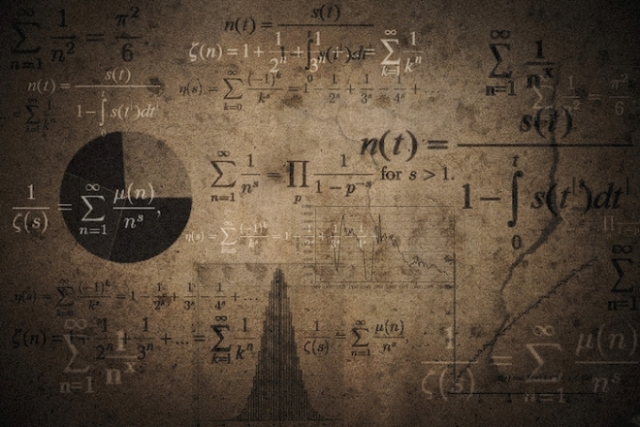
Mathematics has become such an integral part of our lives that we hardly stop to think about it. We check our bill at the grocery store; even without realizing that the basic math we are doing is actually a great power we have to understand nature.
On one hand, mathematical constructs like series, functions, calculus sound like something which is fit for textbooks and in the hands of engineers and scientists. But the history of mathematical discovery is very rich and diverse; the various branches of algebra, geometry, calculus, probability, statistics etc have had very different origins.
Pascal and Fermat, two Frenchmen basically developed the modern theory of probability in a series of letters to each other. Pascal was a mathematician and Fermat a lawyer, both concerned with the question of fairness in splitting up the prize money of an unfinished game of chance. They calculated the probabilities of outcomes and gave the definition of expected value.
Calculus was formulated by Isaac Newton because the prevalent rules of math weren’t enough for him to explain his work in acceleration and gravitation. Calculus allowed him to explain gravity in quite a beautiful fashion and his science became the bedrock of physics for many centuries to come.
On the other hand, there are many mathematical concepts developed just for sake of logic with no immediate practical relevance in mind; but these turn out to explain physical phenomena in nature which are discovered years later. E.g. the brilliant Indian mathematician Ramanujan published numerous equations and theorems in his brief lifetime in first 2 decades of the 20th century. His work has pervaded many areas of modern mathematics and physics. This begs the question, is math a human invention or is it a discovery of some underlying principles of nature…just like other sciences ?
A perspective that can be useful is to see how math is essential to understanding the complexities of nature. Just consider the simple action of throwing a ball in the air in front of you. Newton’s laws will give us pretty much the exact position where the ball will land. So one might consider math as some sort of tool created by us which gives us the info we need.
But nature is not always as simple as throwing a ball in the air. When we consider complicated systems like nature, we start realizing that our basic laws do not seem to useful in predicting outcomes. So does math have a boundary in which it can’t operate? Well, that’s really not the case; math can actually help us understand why nature behaves so erratically and cause what mathematicians call “Chaos”.
We don’t even need a system as complex as the weather to understand chaos. Let’s consider a simple expression f(x)=1-2x^2. To introduce complexity, we loop this expression by itself in the foll way :
f[x]= 1-2x^2 ; f2[x]=f[f[x]] ; f3[x] = f[f2[x]] … f25[x] = f[f24[x]]…
Let’s graph values for this functions for many iterations. We will use a starting value of x=1/π but once with 16 decimals and once with 15 decimals. The results are presented in the graph below.

We see a very surprising trend after about 60 iterations. Even though the difference between two x values is very small, the function values start fluctuating wildly. Thus we can see how even a small difference in the initial conditions can affect the final result. This is known as the butterfly effect. It is said that a butterfly flapping its wings in one part of the world could possibly kickstart a series of events which can lead to a tornado on the other side of planet. Such is the fine margin that nature operates on. It’s important to highlight that this type of chaos generated is completely deterministic unlike truly random events.
Well one might say that we could avoid such chaos by simply using a perfect value for the inputs in our calculations. But as we will show, that is often not possible. Let’s take the example of the number π.
π is defined as the ratio of the circumference of a circle to its diameter. It is calculated by integrating smaller chunks of circular motion along the orbit. But we can only get results of this integration by approximating it to the best possible decimal. π is an irrational number, meaning the digits after the decimal place do not follow any pattern infinitely. The only way to get a value of pi is to approximate up to as many decimal places as our computing system allows.
Thus there is always going to be an error in measurement of inputs when it comes to any calculation involving π. In applications like space orbits when magnitudes are huge, this can lead to big differences based on what level of approximation that we use for π.
The German mathematician, Leopold Kronecker, once said that “God gave us the integers, all else is the work of man”. It seems to imply that most math is just pure human invention. It might be so on paper, but it is beautifully ingrained in nature and is vital for us to understand it’s mysteries. As we have seen, the best simulator of nature is nature itself and it seems like nature is unaware of its future. But math helps us grasp the depths of this uncertainty; so we can almost say that the closest we can get to nature is through mathematical ‘discoveries’.
Reference: